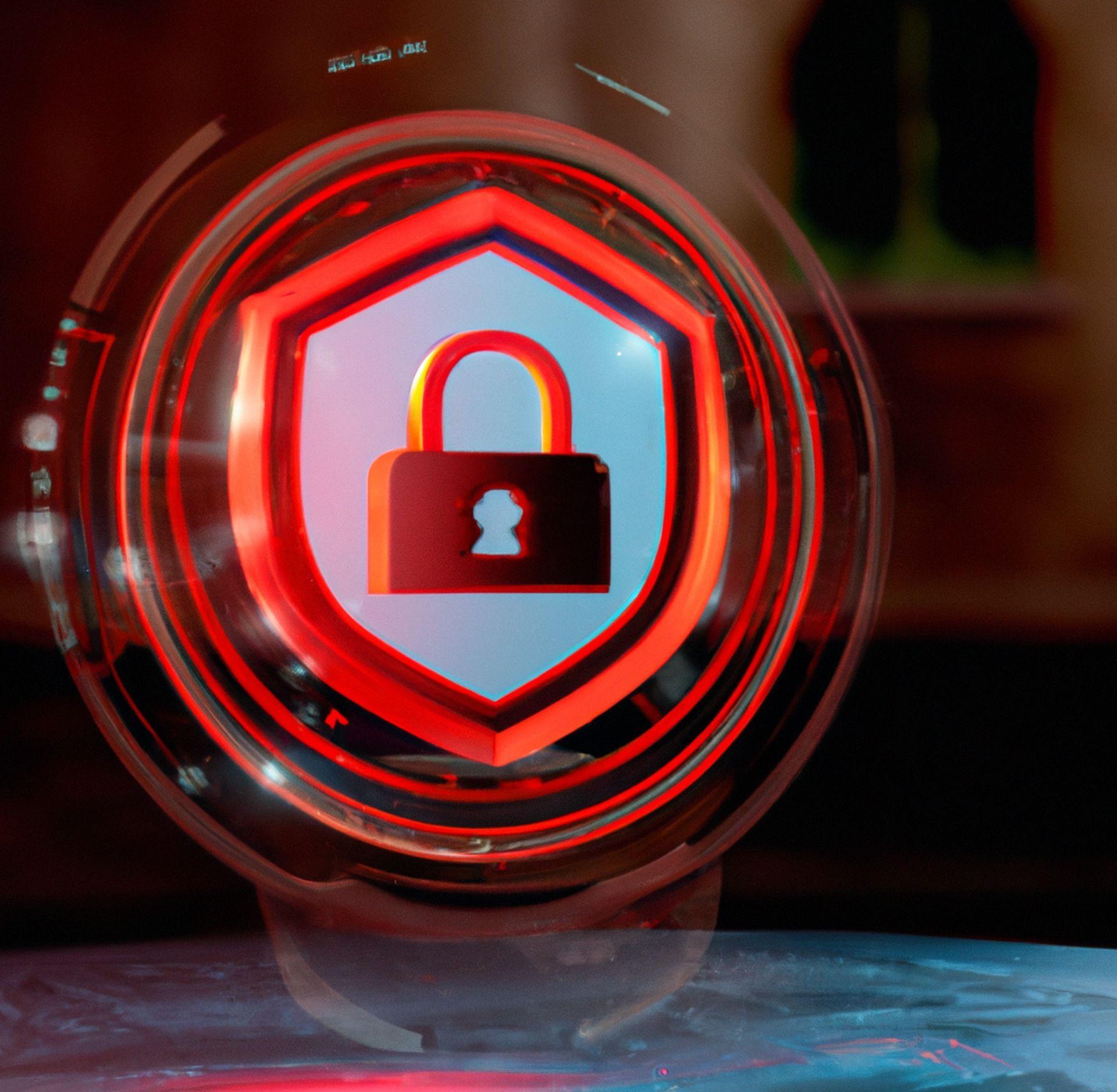Cybersecurity risk assessment is essential for any organization at any stage of its digital transformation journey. Almost all businesses have some IT infrastructure and internet connectivity, which makes them all vulnerable against cyber threats to some extent. Cybersecurity risk assessment practices identify which assets are most vulnerable to cyber threats, how significant the risk is, and what to be done to mitigate it. Risks like fire and flooding that would be considered in a standard risk assessment are not in scope. Cybersecurity risk assessment focuses only on cyber threats.
By reducing the risks found during the assessment, it will be possible to avoid legal and compliance problems as well as costly security incidents and data breaches. Everyone in an organization must consider how cybersecurity threats can affect the firm’s goals as part of the risk assessment process, promoting a risk awareness culture. Now let’s dive in deeper to clear up things. What is a cybersecurity risk assessment?
What is a cybersecurity risk assessment?
An organization’s core business goals and the information technology assets required to achieve those goals must be identified to conduct a cybersecurity risk assessment. The next step is to determine which cyberattacks might harm those assets, how likely they are to happen, and what kind of effects they might have—in other words, to provide a comprehensive picture of the threat environment for a given set of business goals. As a result, stakeholders and security teams are better equipped to decide how and where to adopt security controls, lowering the total risk to levels the organization can tolerate.
Different cybersecurity risk assessment frameworks
Let’s get to know two main cybersecurity risk assessment frameworks now.
NIST Cybersecurity Framework
The NIST Cybersecurity Framework, which is mostly used by American businesses, was created in cooperation with governmental organizations and the private sector. Identifying, detecting, protecting, reacting, and recovering are just a few of the crucial cybersecurity components that the NIST framework addresses. Although the complete recommendations were developed with enterprises managing critical infrastructure in mind, many enterprise-level businesses use them and put them to use in their own cybersecurity initiatives.

ISO 27000
The ISO 27000 framework, which is a member of a wider, expanding family of Information Security Management Systems standards, is a favorite among multinational organizations. This framework, which was created by The International Organizations for Standards, includes both internal and external vendor information. It constantly changes as a living document to meet new information demands and offers ongoing advice.
Four cybersecurity risk assessment tools your organization can use
In order to minimize threat management silos and lower the possibility of false positives, you should search for technologies that can be incorporated into your current security architecture when selecting cybersecurity risk assessment tools.
You can use the following four cybersecurity risk assessment tools to improve security procedures at your company:
Questionnaires
The questionnaires you use to analyze the risk posed by third parties are a crucial part of cybersecurity risk assessments. It takes a lot of resources to create and send surveys, and confirming the results can be challenging. By developing vendor-specific surveys that can be issued and tracked at scale, an automated questionnaire platform like SecurityScorecard’s Atlas helps address these issues. As a result, communication between you and your vendors is transparent because you can monitor their questions in real-time and manage questionnaires more efficiently.
The massive Uber security breach causes an uproar in the cybersecurity community
Security ratings
Security ratings are crucial for evaluating cyber risks since they offer a data-driven, unbiased perspective of a company’s cybersecurity posture. Although security ratings were primarily used to evaluate third-party risk, many firms have started using them to keep track of their internal security operations. These are particularly helpful since they offer excellent insight into a variety of security-related topics, such as attack surface management and threat identification. Systems with security ratings can be used to verify vendor questionnaire answers, enabling businesses to manage vendor risk systematically.

Third-party solutions
Third- and fourth-party suppliers who offer network solutions frequently offer tools that let you check their products for vulnerabilities. Ask about vendor-provided tools if you work with third-party providers; they are frequently free to use. For instance, Google offers a range of free security tools that are intended to evaluate the security posture of computers linked to the internet. These can be used with current security assessment tools to determine your overall risk profile.
Vulnerability assessment providers
A vulnerability assessment seeks to identify vulnerabilities in your IT infrastructure by taking stock of and examining your current security procedures. The assessment report helps organizations develop a framework for threat prioritization by letting them better understand the risk associated with each vulnerability on their network. You can also examine vendor performance by conducting an independent vulnerability assessment, which can strengthen third-party business ties.
How to perform a cybersecurity risk assessment?
The five major steps of a cybersecurity risk assessment are scoping, risk identification, risk analysis, risk evaluation, and documentation.
Cybersecurity risk assessment checklist:
- Identify the scope of the cybersecurity risk assessment
- Identify risks
- Analyze risks
- Prioritize potential threats
- Documentation
Identify the scope of the cybersecurity risk assessment
Determining what is covered by the evaluation is the first step in a risk assessment. It might be the entire company, but this is typically a huge endeavor. Therefore it’s more likely to be a particular department, area, or features of the company, like payment processing or a web application. All stakeholders whose activities fall within the scope of the assessment must be fully on board, as their input will be crucial to determining which assets and processes are the most crucial, identifying risks, evaluating impacts, and defining risk tolerance levels. They may require the assistance of a third party with expertise in risk assessments to get through this resource-intensive task.

To ensure that everyone involved has a shared knowledge of how the risk is presented, they should all be aware of the terms used in risk assessments, such as probability and impact. The ISO/IEC TS 27100 gives a helpful introduction to cybersecurity ideas for inexperienced individuals. It is important to evaluate frameworks and standards like ISO/IEC TS 27110 and NIST SP 800-37 before conducting a risk assessment because they may show businesses how to structure their risk assessments for information security and make sure their mitigating measures are appropriate and effective.
Numerous regulations and laws, including HIPAA, Sarbanes-Oxley, and PCI DSS, call for standardized cybersecurity risk assessments to be carried out by corporations and frequently include instructions and suggestions on how to do so. Avoid a compliance-focused checklist approach when doing a risk assessment, as simply meeting compliance requirements doesn’t mean a business isn’t exposed to any risks.
Identify risks
There are three simple steps you need to take when identifying risks:
Assets
The following step is to identify and compile an inventory of all physical and logical assets that fall under the purview of the risk assessment because you can’t protect what you don’t know about. When determining assets, it’s crucial to not only determine those that are regarded as the organization’s crown jewels—assets crucial to the operation and likely to be the attackers’ primary target—but also assets that attackers might want to seize control of, like an Active Directory server, picture archive, or communications systems.
Alleged cybersecurity issues of Twitter are causing a headache for the firm
The following step of identifying risks is made simpler by creating a network architecture diagram from the asset inventory list, which helps to visualize the connection and communication pathways between assets and processes as well as network entry points.
Threats
Threats are the strategies, tactics, and procedures employed by threat actors that can harm an organization’s resources. Use a threat library, such as the MITRE ATT&CK Knowledge Base or resources from the Cyber Threat Alliance, which both provide high-quality, up-to-date cyber threat information, to assist in identifying possible risks to each asset. Government papers and warnings from security vendors, such as those from the Cybersecurity & Infrastructure Security Agency, can be a great source of information about new dangers that are appearing in particular markets, sectors, locations, or technology.

Potential scenarios
This process involves specifying the repercussions of an identified threat attacking an asset within the scope by utilizing a vulnerability.
It is simpler for all stakeholders to understand the risks they face concerning important business objectives when this information is summarized in straightforward scenarios like this, and it is also easier for security teams to identify the best practices and appropriate measures to address the risk.
Analyze risks
The possibility of the risk scenarios actually happening and their impact on the organization must now be determined. Risk likelihood, or the likelihood that a particular threat can exploit a given vulnerability, should be assessed in a cybersecurity risk assessment based on the discoverability, exploitability, and repeatability of threats and vulnerabilities rather than previous events. This is because cybersecurity threats are dynamic, which implies that likelihood is not as closely correlated with the frequency of prior occurrences as, for instance, earthquakes and flooding are.
The impact is a term used to describe the extent of damage that an organization will experience due to a threat taking advantage of a vulnerability. Each scenario should be evaluated for its effect on secrecy, integrity, and availability, with the scenario with the greatest impact utilized as the final score. Because of the subjective nature of this assessment component, stakeholder and security expert participation is crucial.
Prioritize potential threats
Each risk scenario can be categorized using a risk matrix like the one below, where the risk level is “Likelihood times Impact.” The risk level for our hypothetical scenario would be “Very High” if a SQL injection attack were thought to be “Likely” or “Highly Likely.”
Any scenario that exceeds the predetermined tolerance threshold should be prioritized to reduce its risk to a level acceptable to the organization.
There is always some risk because no system or environment can be made completely secure. Senior stakeholders must formally accept this residual risk as a component of the organization’s cybersecurity risk assessment strategy.

Documentation
All detected risk scenarios should be recorded in a risk register. This needs to be reviewed and updated frequently to guarantee that management always receives the most recent information about its cybersecurity threats.
Rounding up
To strengthen cybersecurity measures, organizations must allocate time and resources to a comprehensive and ongoing cybersecurity risk assessment. As new cyber threats emerge and new systems or activities are implemented, they will need to be repeated. However, suppose it is done well the first time. In that case, it will provide a repeatable process and template for future assessments, decreasing the likelihood that a cyber attack will negatively impact business objectives.
Not just large corporations are at risk from cybercriminals; according to IBM, data breaches damaged small firms by $2.98 million in 2021.
In addition to the expensive dangers posed by cyberattacks, some firms must adhere to industry-specific cybersecurity compliance rules, such as FERPA for educational institutions, PCI DSS for businesses accepting credit and debit card payments, and HIPAA for healthcare businesses.
Businesses must allocate money to cybersecurity. The substantial financial and reputational harm caused by losing client and company data could spell the end for your firm.






